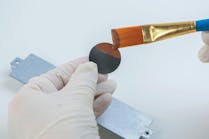Horticultural Lighting Brief – UL 8800, Outline of Investigation for Horticultural Lighting Equipment
As concerns grow about the long-term sustainability of conventional farming and agricultural operations in meeting the world’s future food requirements, increased attention is being given to the potential advantages of what some are calling “controlled environmental agriculture,” or “indoor farming” for short. Luminaires and grow systems specifically designed for horticultural applications are a critical technology in these innovative agricultural environments, since they are essential in achieving optimal plant development and growth. Appropriately, new standards are emerging that address the full range of safety issues posed by lighting technologies deployed in these environments.
About UL 8800
Unlike UL 1598, Standard for Safety of Luminaires, UL 8800, Outline of Investigation for Horticultural Lighting Equipment, is intended to address the unique safety issues applicable to horticultural luminaires, lighting components and grow systems, and represents the first set of standardized requirements specifically designed for horticultural lighting equipment. As a result, UL is currently using the requirements of UL 8800 to evaluate horticultural lighting equipment from manufacturers seeking the UL safety mark for their equipment and devices.
Introduced in 2017, UL 8800 provides a published set of safety for lighting equipment and grow systems intended for use in a horticultural environment, and installed in accordance with the National Electrical Code. Lighting equipment covered under the scope of this Outline of Investigation include luminaires and, when a horticultural system is employed, can also include an assessment of lampholders, wire harnesses, plugs and connectors, light-emitting diode (LED) packages, ballasts/LED drivers, lamps, and hardware and structures (also known as systems) specifically designed or intended for use in optimizing plant growth.
Key Changes in UL 8800
The requirements of UL 8800 differ from those of UL 1598 in several significant ways. Key differences include:
- Targeted scope—The scope of UL 1598 addresses the safety issues of luminaires that are hardwired in a fixed location and designed for the purpose of general illumination. In contrast, the scope of UL 8800 specifically covers luminaires and grow systems intended for the active development and growth of plants.
- Photobiological effects—UL 8800 addresses safety considerations associated with the photobiological effects and potential hazards associated with human eye and skin exposure to light sources technology widely used in horticultural lighting systems. UL 8800 photobiological safety requirements are consistent with those found in IEC 62471, Photobiological safety of lamps and lamp systems, and provides the user with detailed information on what precautions to take regarding the potential exposure of the light output.
- Wiring and connection methods—Unlike luminaires installed in conventional industrial and commercial settings that remain fixed throughout their useful life, horticultural lighting systems are typically designed to be frequently raised, lowered or repositioned in order to optimize plant growth. As such, UL 8800 allows for specialized wiring and connection methods that support the required positioning flexibility.
- Environmental considerations—General environmental conditions within indoor agricultural operations can vary widely, with high humidity levels and temperature conditions. Under UL 8800, horticultural lighting systems are evaluated for their suitability in damp and/or wet environments, as well as in environments with elevated ambient temperatures. Lighting systems achieving UL 8800 Certification bear markings that verify these characteristics.
- Ingress protection—Equipment used in indoor agricultural operations are also at greater risk of infiltration from dust, moisture, and water that can compromise their reliability. UL 8800 addresses these risks with ingress protection (IP) testing that classifies and rates the degree of protection afforded by the equipment against both solid objects and water.
- UV exposure of polymeric materials—Finally, in a grow environment, polymeric materials associated with the equipment can be exposed to UV from the sun, such as within a greenhouse, or UV emanating from the light source within the luminaire. In either case, this exposure can cause polymeric materials to become brittle and more susceptible to breakage. UL 8800 sets forth requirements to address these concerns.
Advantages of UL 8800 Horticultural Luminaire Certification
The failure of a horticultural lighting system design to address the safety criteria in UL 8800 can compromise the safety of the grow facility and workers in the grow environment and can have significant consequences for indoor horticultural operations.
Manufacturers who achieve certification to the requirements of UL 8800 will have met the most rigorous safety criteria currently applicable to horticultural luminaires and lighting systems. Achieving UL 8800 certification also demonstrates to prospective customers a manufacturer’s commitment to providing state-of-the-art lighting technology that meets the unique requirements of horticultural lighting applications.
For more information about UL 8800 and UL 8800 Horticultural Luminaire Certification, contact our team at [email protected]. Or visit our UL Horticultural Lighting page.
Tags: grow systems, Horticultural, Lighting, Lighting components, Lighting systems, Luminaires, Photobiological, UL 8800




